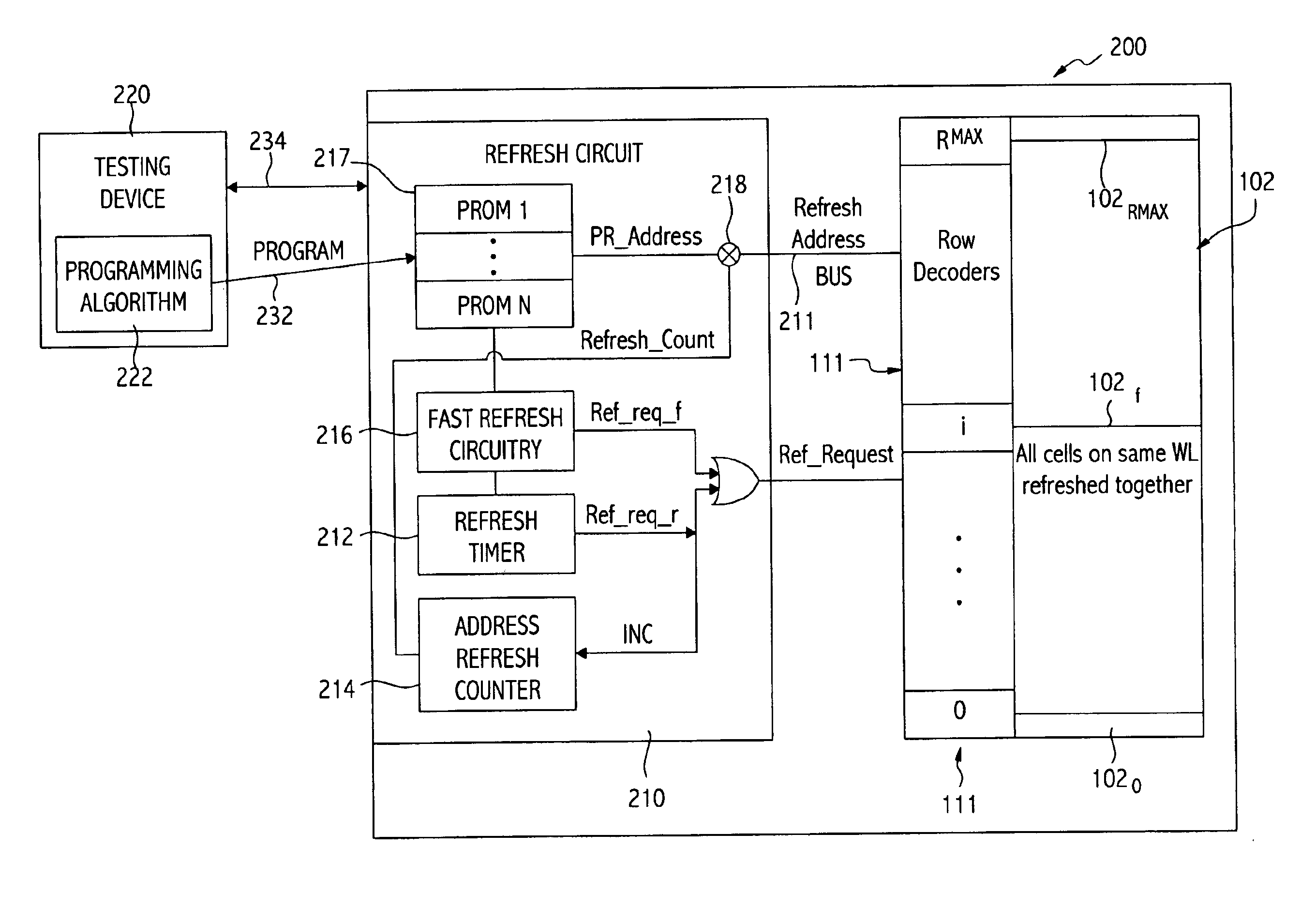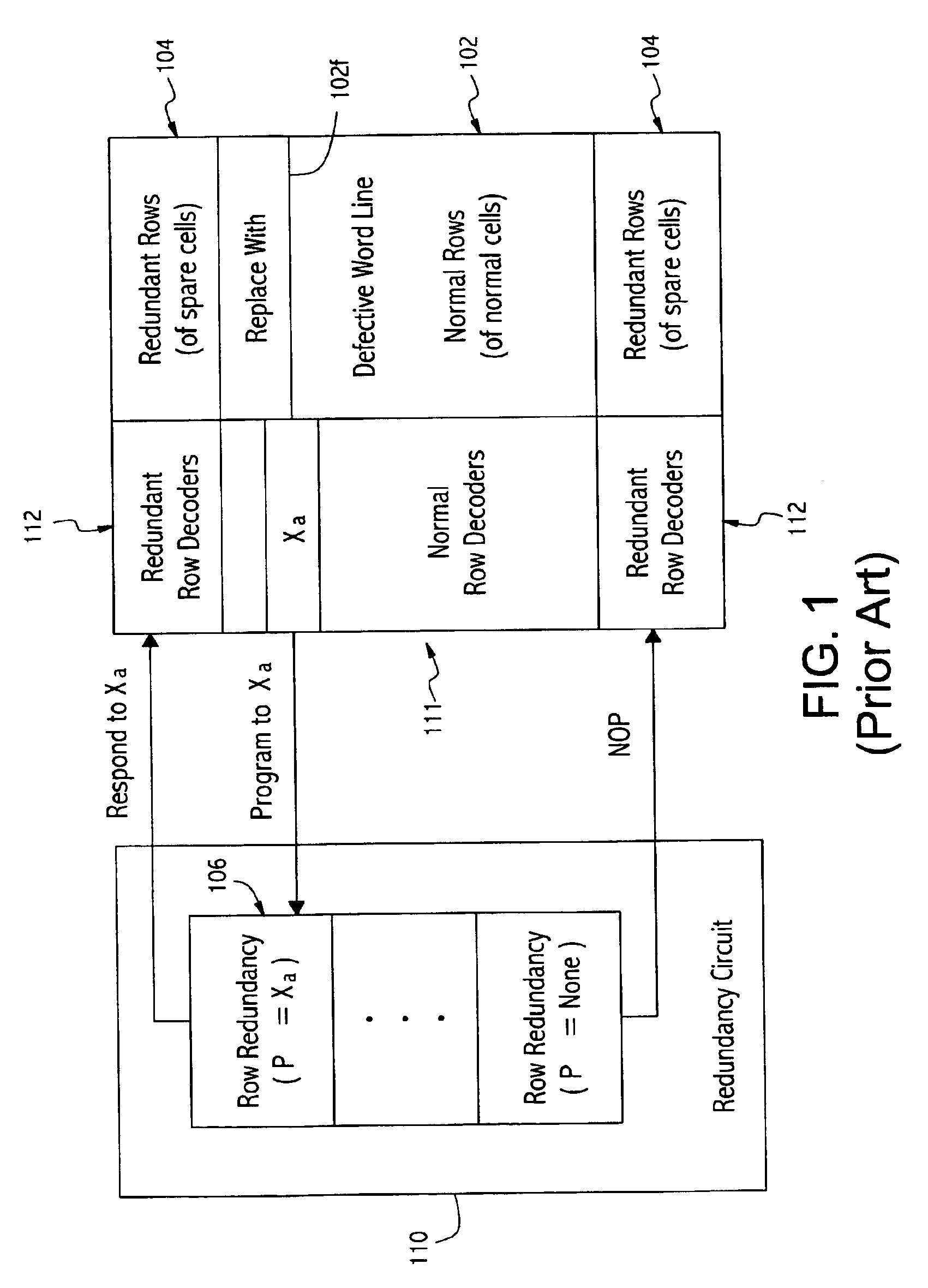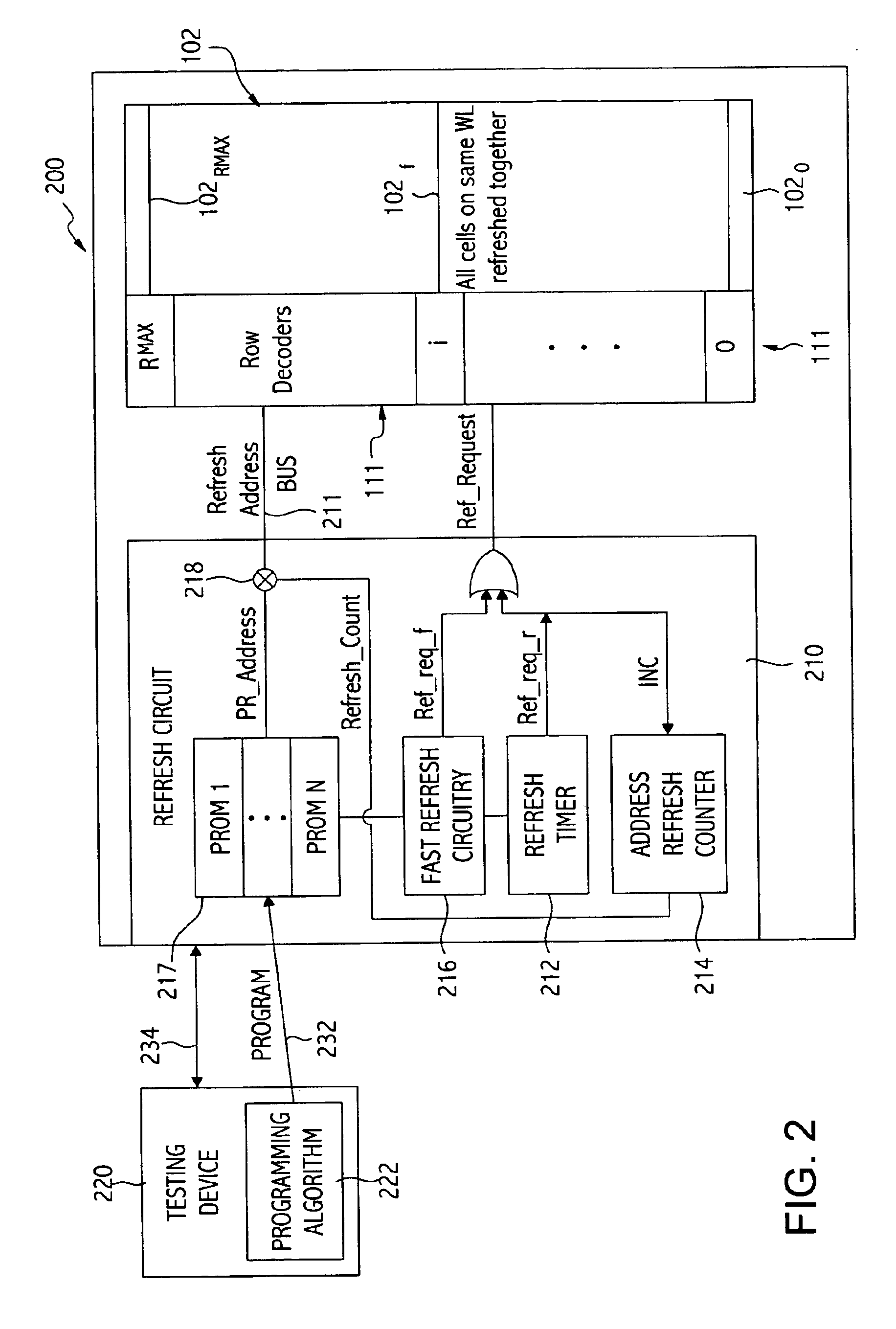Refresh for dynamic cells with weak retention
a dynamic cell and weak retention technology, applied in static storage, digital storage, instruments, etc., can solve the problems of circuitry required to support redundancy, occupying a significant amount of chip area, and cell failures that have fallen below even the less stringent minimum retention time for normal parts
- Summary
- Abstract
- Description
- Claims
- Application Information
AI Technical Summary
Benefits of technology
Problems solved by technology
Method used
Image
Examples
Embodiment Construction
[0030]Embodiments of the present invention generally provide methods and circuit configurations for utilizing memory cells having weak retention times. For some embodiments, rows identified as having weak retention cells may be refreshed more often than “normal retention” cells. As an example, if a normal refresh period is TREF, weak retention cells may be refreshed every TREF / 2 or TREF / 4 (possibly depending on the actual measured retention time). As a result, weak retention cells may work properly at this increased refresh frequency, without being replaced by redundancy. While some cells may still fail (e.g., regardless of retention time), embodiments of the present invention may reduce chip area overhead by reducing the number of redundant circuits conventionally required to replace rows with weak retention cells.
[0031]The techniques and circuits described herein for refreshing weak retention cells may be used to advantage in any type of devices that utilize dynamic memory cells t...
PUM
 Login to View More
Login to View More Abstract
Description
Claims
Application Information
 Login to View More
Login to View More - R&D
- Intellectual Property
- Life Sciences
- Materials
- Tech Scout
- Unparalleled Data Quality
- Higher Quality Content
- 60% Fewer Hallucinations
Browse by: Latest US Patents, China's latest patents, Technical Efficacy Thesaurus, Application Domain, Technology Topic, Popular Technical Reports.
© 2025 PatSnap. All rights reserved.Legal|Privacy policy|Modern Slavery Act Transparency Statement|Sitemap|About US| Contact US: help@patsnap.com



